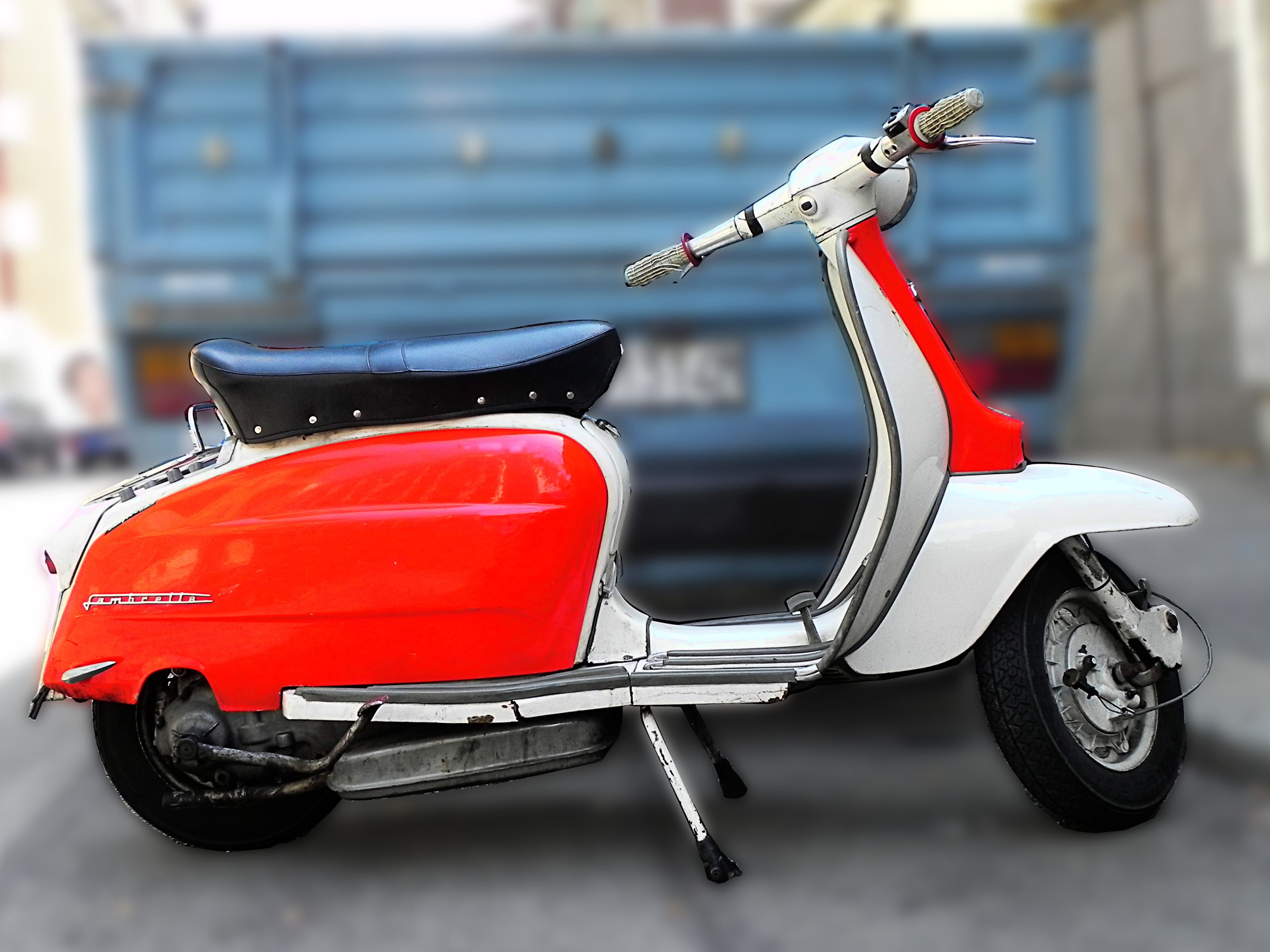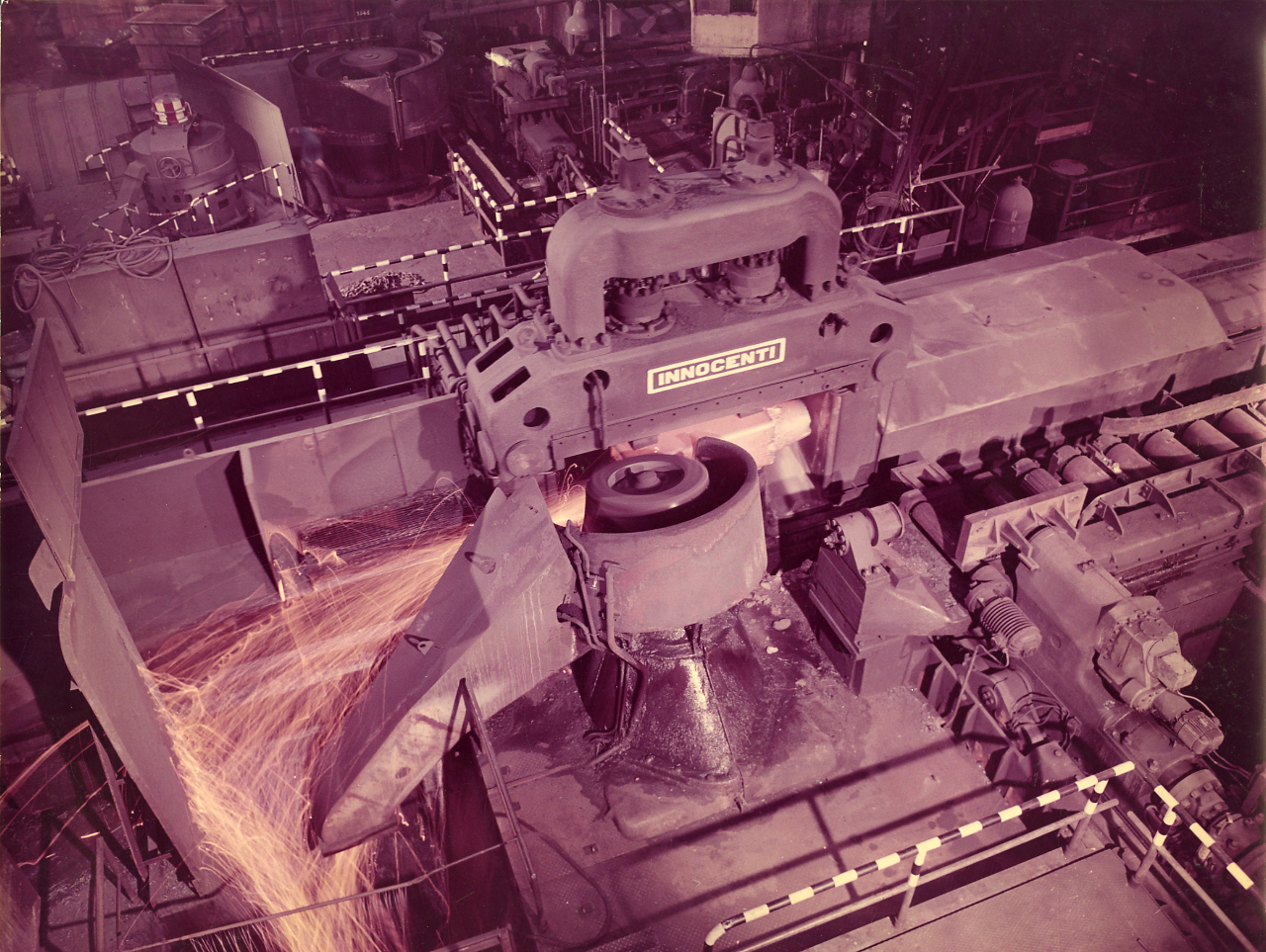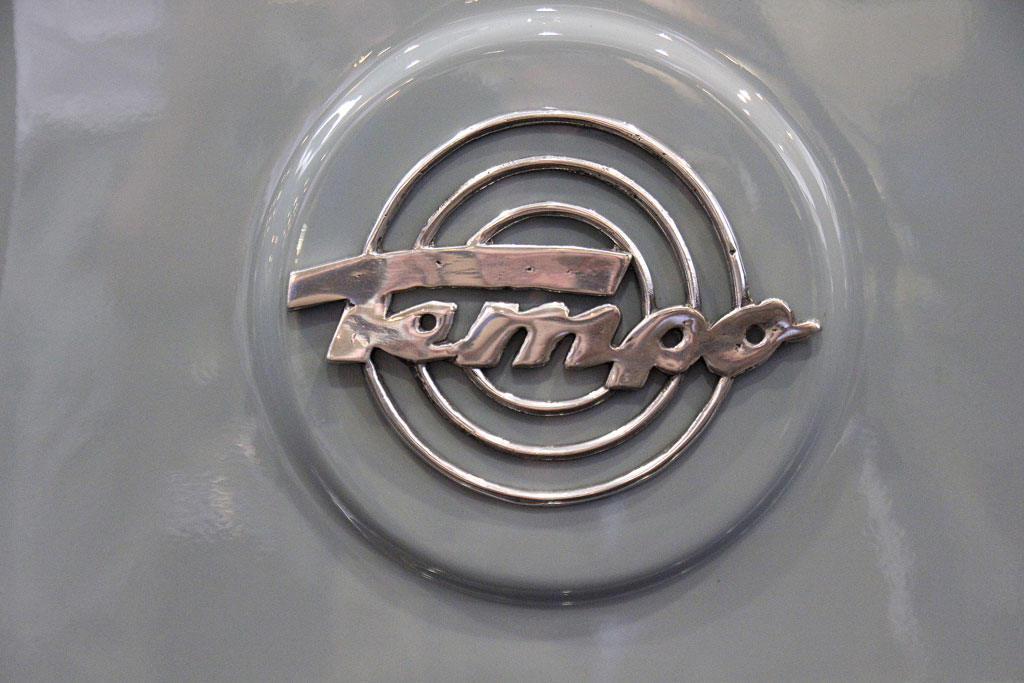|
Goliath Rapid
The Goliath Rapid is a lorry made by ''Bremer Kühlerfabrik Borgward & Co. GmbH'' in Sebaldsbrück (a neighborhood in Hemelingen, a suburb of Bremen, Germany). The Rapid, which technically was an improved version of the Goliath Blitzkarren, was sold under the ''Goliath'' brand name. Bordward's radiator-producing company was later renamed to ''Goliath-Werke Borgward & Co. GmbH''. The Rapid consists of two parts: A "cart"-like front with two steerable wheels, and a "motorcycle" rear part with a single wheel. Between cart a motorcycle, it has an orthogonal wall and a steering wheel, to control the front wheels. A windshield was offered as a factory option. The Rapid has an electric starter, a clutch, and a 3-speed gearbox with a single reverse gear. Electric lamps including a stoplight were offered as a factory option that cost RM 170; an electric horn was offered for RM 30. The maximum permissible payload is 250 kg. The Rapid is powered by an ILO-Motorenwerke-made 198 cc, sing ... [...More Info...] [...Related Items...] OR: [Wikipedia] [Google] [Baidu] |
Bremen
Bremen (Low German also: ''Breem'' or ''Bräm''), officially the City Municipality of Bremen (german: Stadtgemeinde Bremen, ), is the capital of the German state Free Hanseatic City of Bremen (''Freie Hansestadt Bremen''), a two-city-state consisting of the cities of Bremen and Bremerhaven. With about 570,000 inhabitants, the Hanseatic city is the 11th largest city of Germany and the second largest city in Northern Germany after Hamburg. Bremen is the largest city on the River Weser, the longest river flowing entirely in Germany, lying some upstream from its mouth into the North Sea, and is surrounded by the state of Lower Saxony. A commercial and industrial city, Bremen is, together with Oldenburg and Bremerhaven, part of the Bremen/Oldenburg Metropolitan Region, with 2.5 million people. Bremen is contiguous with the Lower Saxon towns of Delmenhorst, Stuhr, Achim, Weyhe, Schwanewede and Lilienthal. There is an exclave of Bremen in Bremerhaven, the "Citybremian Overseas Port ... [...More Info...] [...Related Items...] OR: [Wikipedia] [Google] [Baidu] |
Carl Borgward
Carl Friedrich Wilhelm Borgward (November 10, 1890 in Altona, Hamburg – July 28, 1963 in Bremen (city), Bremen) was a German engineer and designer and the creator of the Borgward group, based in Bremen. Biography He was of modest origin, the son of coal retailer Wilhelm Borgward, and had twelve brothers and sisters. He undertook mechanical engineering studies, and obtained his engineering degree from Leibniz University Hannover, Hannover Technical University in 1913. He was wounded during World War I. In 1919 he became one of the partners of ''Bremer Reifenindustrie''. The company was restructured and in 1920 became ''Bremer Kühlerfabrik Borgward & Co. In 1924 and 1925 the company started to produce the small Motorized tricycle, three-wheel trucks ''Blitzkarren'' and ''Goliath''. With his partner Wilhelm Tecklenborg, in 1928 he created the company ''Goliath-Werke Borgward & Co''. When the two associates took over ''Hansa-Lloyd-Werke'' in 1931, this became the Borgward Gr ... [...More Info...] [...Related Items...] OR: [Wikipedia] [Google] [Baidu] |
Tatra 49
The Tatra 49 is a model of vintage three-wheeled motor vehicle made by Czech manufacturer Tatra. It was developed with an aim to offer a reliable commercial car at the lowest possible cost. It shared some parts with the Tatra 12 and Tatra 30. However the motor tricycle wasn't a commercial success and only about 200 of them were made from 1929 to 1930. A few cars of the type also had a body shell similar to the one used by the Tatra 12. Design Engine The car had ''Tatra 49'' engine. This was a four stroke, spark ignition, air cooled, single-cylinder petrol engine based on that of the Tatra 12 (basically being a Tatra 12 engine cut in half). The engine had a power output of at 2,501 rpm with a displacement of . Chassis The central backbone tube chassis is supported by a stiff front axle taken from a Tatra 30 The Tatra 30 is an automobile formerly made by the Czech manufacturer Tatra. It was manufactured between 1926 and 1928. From 1928 to 1931 the car was fitted with a ... [...More Info...] [...Related Items...] OR: [Wikipedia] [Google] [Baidu] |
Lambretta
Lambretta () is the brand name of mainly motor scooters, initially manufactured in Milan, Italy, by Innocenti. The name is derived from the word Lambrate, the suburb of Milan named after the river Lambro which flows through the area, and where the factory was located. ''Lambretta'' was the name of a mythical water-sprite associated with the river which runs adjacent to the former production site. ''Motor Cycle'' 17 November 1966 p.517 ''On the Four Winds'' by ''Nitor''. Accessed 18 July 2015Scootermania: A Celebration of Style and Speed Sims, Josh at Google Books. Retrieved 18 July 2015 In 1972, the Indian gov ... [...More Info...] [...Related Items...] OR: [Wikipedia] [Google] [Baidu] |
Innocenti
Innocenti () was an Italian machinery works, originally established by Ferdinando Innocenti in 1920. Over the years, they produced Lambretta scooters as well as a range of automobiles, mainly of British Leyland origins. The brand was retired in 1996, six years after being acquired by Fiat. History After World War II, the company was famous for many years for Lambretta scooters models such as LI125, LI150, TV175, TV200, SX125, SX150, SX200, GP125, GP150 and GP200. From 1961 to 1976, Innocenti built under licence the BMC (later the British Leyland Motor Corporation / BLMC) Mini, with 848, 998 cc and 1,275 cc engines, followed by other models, including, from 1973, the Regent (Allegro), with engines up to 1,485 cc. The company of this era is commonly called Leyland Innocenti. The Innocenti Spyder (1961–70) was a re-bodied version of the Austin-Healey MKII Sprite (styling by Ghia). The car was produced by OSI, near Milan. In 1972, BLMC took over control of t ... [...More Info...] [...Related Items...] OR: [Wikipedia] [Google] [Baidu] |
Rollfix-Eilwagen
The Rollfix-Eilwagen GmbH (Rollfix Express Car Ltd.) was a German manufacturer of motor vehicles in Wandsbek quarter of Hamburg, Germany, located at Stubbenhuk 10, today the location of the Henry-Nannen Journalist School. The company was founded in 1923 or earlier. Another source indicates 1926 as founding year. 1923 began the production and marketing of three wheeler of the brand ''Rollfix''. The company was specialized on commercial vehicles. In addition, some were created Passenger cars. 1933 it came to a comparison procedure. Successor company became the 1934 ''Rollfix-Werke Frederic Schröder KG'' with the brand name Motrix. The first vehicles had the single wheel behind. Between the two front wheels was an open platform for cargo. Alternatively, a box was available. A tubular frame formed the base. A two-stroke engine was placeded in front of the chaindriven rear wheel. First 127 cc engines were supplied by DKW and had optional 297 cc. The driver sat on a saddle over ... [...More Info...] [...Related Items...] OR: [Wikipedia] [Google] [Baidu] |
BMW F 76
The BMW F 76 was a small tricycle delivery van made by BMW. It was built from 1932 to 1933 in BMW's Eisenach plant. In 1933, the BMW F 79 version with a larger engine was put into production. History Development The BMW 3/15's van version did not sell very well; only 435 vehicles were sold from May 1929 to February 1932. Dossier des BMW Group Archivs The success of other manufacturers' three-wheeled commercial vehicles during the Great Depression made BMW Munich develop its own tricycle lorry in 1931. It had a two person bench seat and a single-cylinder motorcycle engine. A one-seat variant had been tested as well as a passenger car, but both were not put into production. Marketing In autumn 1932, the ''F 76s production commenced in the BMW Eisenach factory. It had a 200 cc engine, and therefore, could be driven legally without a driving licence. It was priced at RM 1350. In January 1933, the ''F 79'' version with a 400 cc engine was introduced; it cost RM 1500. A h ... [...More Info...] [...Related Items...] OR: [Wikipedia] [Google] [Baidu] |
D-Lieferwagen L-7
The D-Lieferwagen L-7 (''D delivery truck L-7'') was a three wheeler pickup truck of the German industrial plants AG, which was built from 1927 to 1930 in Berlin suburb Spandau, Germany. The delivery van corresponded to the then demand for inexpensive vehicles for small and express transports in the cities. History The market success of the tricycle cars Phänomobil and Cyklonette also prompted the motorcycle manufacturer ''Deutschen Industriewerke AG'' to design a cheap alternative to the automobile or small van: In 1927 was the ''L-7'' presented as flatbed and van variant was able for payload of a half metric ton. Also a mobile market booth version was offered. The engine technology was taken from D-Rad. At a price of 1790 Reichsmark, the pickup truck was affordable for many craft businesses and small businesses. In late 1920s the company faced increasing competition as more and more manufacturers launched wheel loaders; so the companies Zündapp, Monos, Mandernach, Rol ... [...More Info...] [...Related Items...] OR: [Wikipedia] [Google] [Baidu] |
Tempo (automobile)
Tempo (also known as Vidal & Sohn Tempo-Werke GmbH), was a German automobile manufacturer based in Hamburg. The company was founded by Oscar Vidal in 1924. The company was well known in Germany, producing popular vans like the Matador and the Hanseat. Tempo also produced small military vehicles during the 1930s and 1940s. History Tempo was founded as Vidal & Sohn Tempo-Werke in 1924. During the 1940s, Tempo produced small military vehicles. Post-war the requirement of the Bundesgrenzschutz, in West Germany, to acquire a suitable vehicle for Border patrol led to production of the 80" and 86" Tempo from 1953 to 1957. The Tempo 80" and 86" were built using a rolling chassis from Land Rover, but attempts to continue production with the 88" and 109" models were not successful. In 1958, Firodia Ltd, an Indian manufacturer of cars (later acquired by Bajaj Tempo, renamed since 2005 to Force Motors), started the production of Hanseat three-wheeled cars with the collaboration of Tempo ... [...More Info...] [...Related Items...] OR: [Wikipedia] [Google] [Baidu] |
Goliath F200
The Goliath F400 is a three-wheeled pickup transporter, made by Hansa-Lloyd and Goliath Company Borgward & Tecklenborg in Bremen, Germany which was sold under the brand Goliath. It was based on the three-wheeled passenger car Goliath Pionier with a closed timber-framed wood cab. Unlike the ''Pionier'', a three-wheel microcar, the rear of the F400 a longer box as panel van or a framed flatbed as pickup truck was installed. The rear axle was mounted on leaf springs, and the engine was under the seat. The front wheel was guided on a single swingarm. The body had a reclined front, externally mounted headlights and unlike the Goliath Pionier not a vertical, but a tilted windshield to reduce wind drag. The maximum speed of the "Quick Transport Vehicle" (''Schnelltransporter'') was 30 mph. It was equipped with an air-cooled two-cylinder two-stroke engine with 12 to 13.6 hp reached by a 396 cc engine displacement with a bore 60 mm and stroke 70 mm. The rear wheels were driven by a card ... [...More Info...] [...Related Items...] OR: [Wikipedia] [Google] [Baidu] |
Patent
A patent is a type of intellectual property that gives its owner the legal right to exclude others from making, using, or selling an invention for a limited period of time in exchange for publishing an enabling disclosure of the invention."A patent is not the grant of a right to make or use or sell. It does not, directly or indirectly, imply any such right. It grants only the right to exclude others. The supposition that a right to make is created by the patent grant is obviously inconsistent with the established distinctions between generic and specific patents, and with the well-known fact that a very considerable portion of the patents granted are in a field covered by a former relatively generic or basic patent, are tributary to such earlier patent, and cannot be practiced unless by license thereunder." – ''Herman v. Youngstown Car Mfg. Co.'', 191 F. 579, 584–85, 112 CCA 185 (6th Cir. 1911) In most countries, patent rights fall under private law and the patent holder mus ... [...More Info...] [...Related Items...] OR: [Wikipedia] [Google] [Baidu] |
Reichsmark
The (; sign: ℛℳ; abbreviation: RM) was the currency of Germany from 1924 until 20 June 1948 in West Germany, where it was replaced with the , and until 23 June 1948 in East Germany, where it was replaced by the East German mark. The Reichsmark was subdivided into 100 s (Rpf or ℛ₰). The Mark is an ancient Germanic weight measure, traditionally a half pound, later used for several coins; whereas (''realm'' in English), comes from the official name for the German state from 1871 to 1945, . History The Reichsmark was introduced in 1924 as a permanent replacement for the Papiermark. This was necessary due to the 1920s German inflation which had reached its peak in 1923. The exchange rate between the old Papiermark and the Reichsmark was = 1012 ℳ (one trillion in American English and French, one billion in German and other European languages and British English of the time; see long and short scale). To stabilize the economy and to smooth the transition, the Papierm ... [...More Info...] [...Related Items...] OR: [Wikipedia] [Google] [Baidu] |






